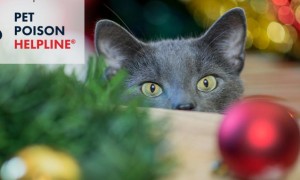How to Get Rid of Fleas on Kittens
Fleas are one of the most common pests that can affect pets, especially kittens. These tiny creatures can not only cause discomfort to your furry friend, but they can also lead to serious health issues if left untreated. In this article, we will discuss effective methods to rid your kittens of fleas safely and efficiently, ensuring that your little companions remain healthy and happy.
Understanding the Flea Life Cycle
Before diving into treatment methods, it’s essential to understand flea biology. Fleas are resilient pests with a life cycle that includes four stages: egg, larva, pupa, and adult. Understanding this cycle is crucial for effective flea control. Adult fleas lay eggs on the host (your kitten) and in the environment, which can quickly lead to an infestation if not managed correctly.
Fleas thrive in warm, humid environments, making your home a prime breeding ground. Each female flea can lay up to 50 eggs daily, leading to rapid population growth. Therefore, addressing flea problems promptly is vital to prevent a minor annoyance from becoming a significant issue.
Signs of Flea Infestation in Kittens
Identifying fleas can sometimes be challenging, especially in kittens with dense fur. However, there are telltale signs to watch for:
- Scratching and Discomfort: If your kitten is excessively scratching or biting at their skin, it may be due to flea irritation.
- Flea Dirt: This is essentially flea feces, resembling small black specks. You can check for flea dirt by combing your kitten with a fine-toothed flea comb over a white paper towel. If reddish-brown stains appear when the dirt is moistened, it’s a strong indication of a flea infestation.
- Invisible Fleas: While you may not always see fleas, their presence can be indicated by other behaviors, like restlessness or hiding.
Safe Flea Treatments for Kittens
-
Consult Your Veterinarian: The first step in dealing with fleas is to consult your vet, especially for very young kittens. Not all flea treatments are suitable for all ages, and your vet can recommend safe and effective products.
-
Flea Comb: A flea comb is a great tool for removing fleas and flea dirt from your kitten’s fur. Make sure to use the comb regularly, particularly in the warmer months when fleas are more active. After combing, dip the comb in soapy water to drown any fleas you catch.
-
Topical Treatments: Many topical flea treatments are available that are safe for kittens over a certain age. These treatments usually involve applying a small amount of liquid to the back of the neck, where your kitten cannot lick it off. Remember to follow the instructions carefully and only use products formulated for kittens.
-
Oral Medications: There are also oral flea medications, such as tablets or treats, that can be given to kittens. These medications work systemically, killing fleas within hours to days. Again, it is crucial to consult your vet regarding the appropriate product and dosage.
-
Natural Remedies: If you prefer a more natural approach, there are several remedies that can help reduce flea populations. For instance, apple cider vinegar can be diluted with water and sprayed on your kitten’s fur to repel fleas. However, it’s important to do a patch test to ensure your kitten doesn’t have a reaction, and remember that natural remedies may not be as effective as veterinary treatments.
-
Flea Collars: While some flea collars are suitable for kittens, they can often be too harsh for very young or sensitive animals. Consult your vet for recommendations before using a flea collar.
Treating Your Home for Fleas
It’s essential to remember that treating your kitten isn’t enough. You must also address your home environment to ensure that fleas don’t return. Here are ways to effectively treat your living space:
-
Vacuum Thoroughly: Vacuum every corner of your home, focusing on areas where your kitten spends time. Pay special attention to carpets, rugs, and upholstery. Make sure to immediately dispose of the vacuum bag or empty the canister outside to prevent any eggs or larvae from reinfesting.
-
Wash Bedding: Wash all of your kitten’s bedding, toys, and any fabrics they frequently contact in hot water. This is an essential step for breaking the flea life cycle.
-
Use Flea Sprays or Foggers: If the infestation is severe, you might consider using a flea spray or fogger. Choose a product that’s safe for pets, and carefully follow the instructions to minimize exposure to your kitten.
-
Treat Other Pets: If you have other pets in your home, they may also need flea treatments. Be sure to treat all pets simultaneously to prevent reinfestation.
-
Yard Maintenance: If your kitten has access to the outdoors, treat your yard as well. Keeping the grass trimmed and removing debris can reduce flea habitats.
Preventing Future Infestations
Once you’ve eliminated fleas, you’ll want to take steps to prevent future infestations. Regular grooming with a flea comb, routine vacuuming, and consistent use of veterinarian-recommended flea prevention products can help keep your kitten flea-free.
In conclusion, dealing with fleas on kittens can be challenging, but with proper knowledge and tools, it is entirely possible to rid your beloved pets of these pests effectively. Always remember to consult your veterinarian for the safest and most effective treatments tailored to your kitten’s needs, and take proactive measures to keep fleas at bay. A little diligence today can lead to a happy, flea-free tomorrow for your furry friend!






